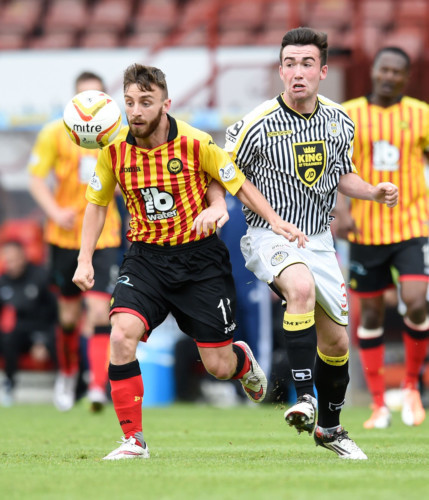
The Steven Lawless story has two sides to it.
The Partick Thistle player is up in front of an SFA judicial panel on Thursday, accused of betting on 513 matches in just over two years.
My first thought is while the number sounds dramatic it might, if proved, actually centre around a lot of very small-scale gambling.
That it might be a succession of the sort of roll-up accumulator bets that are so popular. The gambler predicts eight results or more in order to get a bumper return for a small stake.
These are pretty trivial in the grand scale of things.
My second thought, though, is of the need for rules and regulations to be observed. Because the degree of innocence in any individual case doesn’t detract from the big question.
Why would any footballer in this day and age get involved in betting on results involving domestic action? They know it is wrong.
No-one can have missed the high-profile cases involving the two Rangers players, Ian Black and Steven Simonsen.
Even if they had, all will have been visited by representatives of the Players Union hammering the message home. It is not as if it is a difficult concept to grasp.
If you make your living playing or coaching in the Scottish game, then you can’t be betting on it.
It has been proved gambling is one of the most-favoured routes for match-fixers to break into the game. If fans lose faith in the integrity of the game, they stop paying their money to go and watch matches. It is as simple as that.
I acknowledge it looks a bit odd that in the same week as Ladbrokes became the SPFL’s new sponsor, a player is charged for allegedly betting on Scottish matches.
However, there is no reason we can’t have bookmakers sponsoring leagues in which the participants aren’t allowed to gamble on the results of their games.
They are perfectly free to bet on other sports or on football being played in other countries.
We already have William Hill as the backers of the Scottish Cup.
Now Ladbrokes have come in to join them, there is no reason to think that won’t be equally successful.

Enjoy the convenience of having The Sunday Post delivered as a digital ePaper straight to your smartphone, tablet or computer.
Subscribe for only £5.49 a month and enjoy all the benefits of the printed paper as a digital replica.
Subscribe